Beyond Blurred Lines
Beyond Blurred Lines
Rape Culture in Popular Media
Nickie D. Phillips
ROWMAN & LITTLEFIELD
Lanham Boulder New York London
Published by Rowman & Littlefield
A wholly owned subsidiary of The Rowman & Littlefield Publishing Group, Inc.
4501 Forbes Boulevard, Suite 200, Lanham, Maryland 20706
www.rowman.com
Unit A, Whitacre Mews, 26-34 Stannary Street, London SE11 4AB
Copyright 2017 by Rowman & Littlefield
All rights reserved. No part of this book may be reproduced in any form or by any electronic or mechanical means, including information storage and retrieval systems, without written permission from the publisher, except by a reviewer who may quote passages in a review.
British Library Cataloguing in Publication Information Available
Library of Congress Cataloging-in-Publication Data Available
ISBN 978-1-4422-4627-0 (cloth : alkaline paper)
 TM The paper used in this publication meets the minimum requirements of American National Standard for Information Sciences Permanence of Paper for Printed Library Materials, ANSI/NISO Z39.48-1992.
TM The paper used in this publication meets the minimum requirements of American National Standard for Information Sciences Permanence of Paper for Printed Library Materials, ANSI/NISO Z39.48-1992.
Printed in the United States of America
Acknowledgments
This book may bear my name, but many others helped me along the path to bringing it to fruition. They certainly deserve credit and praise here. Id like to give special thanks to Jeffrey Cohen, Gennifer Furst, Tammy Garland, Kishonna Gray, Emily Horowitz, Chris Krebs, Alyce McGovern, and Staci Strobl for offering support, comments, and constructive criticism on various drafts. Thanks to Andrea Auther, Wendy Galgan, and Esther Klein for listening to my rambling thoughts and offering encouragement along the way.
Thanks to Provost Timothy Houlihan and Rich Relkin at St. Francis College for your support and to the college for the generous funding for student assistants whose help was invaluable at the outset of this project, including Trang Cao, Rosa Casiano, Ellie Marcus, and Eva Nieves.
Id like to thank Kathryn Knigge and Melissa McNitt at Rowman & Littlefield for their support and assistance ushering the book through production.
Thanks to everyone, including Michelle, Maria, Lamar, Ashley, and others, at Root Hill Cafe for the best iced mocha lattes in Brooklyn.
Most importantly, special thanks to my family and to KT for endless hours of listening and for lending editing skills to the book; you continue to amaze. And finally, Id like to dedicate the book to Patrick Tucker for being a brave soul and to Bernice Tucker for being a lovely soul.
Chapter 1
Rape Culture
The Evolution of a Concept
In the spring of 2014, Elliot Rodger, a twenty-two-year-old in Isla Vista, California, embarked on a stabbing and shooting spree, killing six, wounding thirteen, and ultimately killing himself. Later, it was found that Rodger had left a manifesto, My Twisted World, in which he expressed misogynist, racist, and violent rhetoric directed at women and others that he believed had thwarted his attempts to become sexually active. He had also posted a video on YouTube entitled Retribution that contained similar comments. In it, Rodgers sense of entitlement is palpable as he describes that he deserves a girlfriend and that he was rabidly jealous of other couples. Beyond the obvious alarming nature of Rodgers words, the strangest aspect of the video is his unsettling delivery and maniacal laughter. The Daily Mail tabloid newspaper described Rodger in the video as behaving as if he were delivering a movie.
In response to the events, film critic Ann Hornaday of the Washington Post indicted the entertainment industry, specifically Hollywood movies, for perpetuating a culture of entitled womanizers. She wrote, If our cinematic grammar is one of violence, sexual conquest and macho swagger... no one should be surprised when those impulses take luridly literal form in the culture at large.
Many readers, including New York Times op-ed columnist Frank Bruni, condemned Hornaday for a question too far, for suggesting that Hollywood had influence on Rodgers behavior. In fact, she received so much criticism from her column that she posted a video response on the Washington Post website reiterating how Rodgers comments, coupled with the production values of his YouTube video clip, seemed to embody so much of the entertainment culture he had been exposed to growing up.
Much of the criticism against Hornaday was in direct response to the idea that Hollywood fare directly causes violence, yet Hornadays point was more nuanced. She critiqued the entertainment business as overwhelmingly run by men, and as having a culture that objectifies women and portrays any scenario in which the shlubby arrested [male] adolescent does not get the girl as grossly unfair. Hornaday also homed in on a point perhaps more significant than whether popular culture directly causes violence: she suggested that the prevalent portrayals drastically limit our collective imagination.
While many were quick to criticize Hornaday, others echoed her comments. Using the hashtag #YesAllWomen, many Twitter users reacted to the Rodger incident by emphasizing that his misogynist statements about women were not necessarily shocking but, rather, indicative of the attitudes and statements by men that many women face daily. The hashtag, a response to the antifeminist #NotAllMen that was spawned to point out that not all men are responsible for violence against women, began trending after the incident.
While the Rodger case faded from the news cycle, the debates spurred by his crimes are part of a broader public dialogue around the concept of rape culture. While the term has been used among feminist scholars for decades to describe the cultural normalization of sexual violence, it has only recently, primarily since 2013, been a significant part of the popular discourse, or collective imagination to quote Hornaday. Using a cultural criminological framework, this book aims to show how the concept of rape culture has entered into our collective imagination, effectively providing a cultural space for the notion that violence against women is often ignored, implicitly condoned, or explicitly encouraged in the United States. Drawing on news articles, websites, blogs, and other social media, the book contends that the current intensified discourse about rape culture has created a media-cultural environment that ultimately impacts politics and policy making.
This chapter explores the contested meanings of the term and the subsequent backlash against its usage. As a means of providing a backdrop to the larger discussion about public discourse around the topic, the chapter shows how the terms rise in popularity does not necessarily correspond to increases in actual rates of violence against women in the United Statesat least according to official statistics. Although the use of the term skyrocketed in 2013, conservative pundits and others quickly leveled a backlash against its use. Many were critical of the term for forging a perceived link between microaggressionsthe constant exposure to misogyny, harassment, objectification, and nonphysical aggression experienced by women on a daily basisand sexual violence.
Rape Culture and Feminist Fury
When she was crowned Miss USA in June 2014, Nia Sanchez from Nevada was asked about the problem of sexual assaults on campuses and why colleges have swept so many allegations under the rug. Sanchez, a fourth-degree black belt in Tae Kwon Do, replied,
Next page
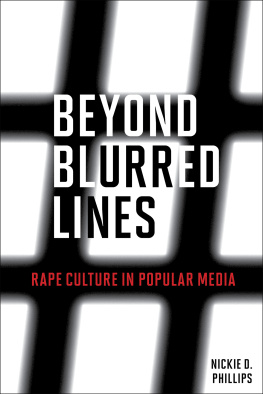

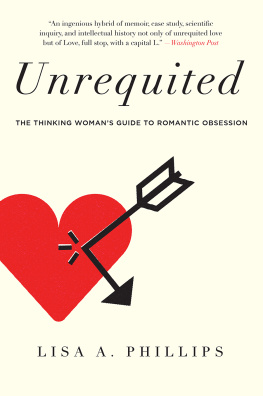
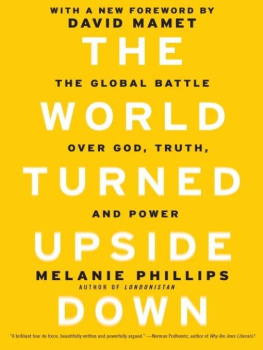
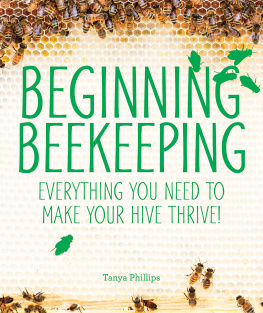
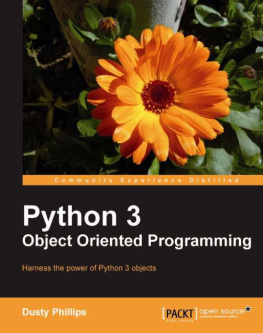



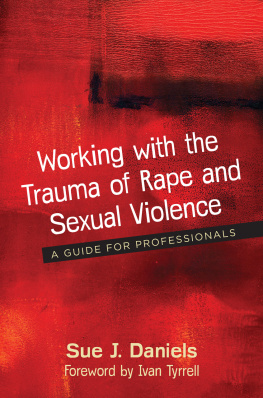
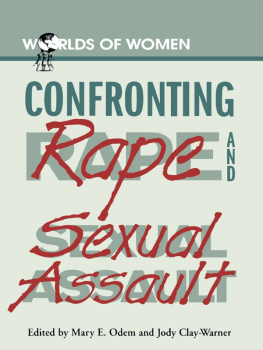


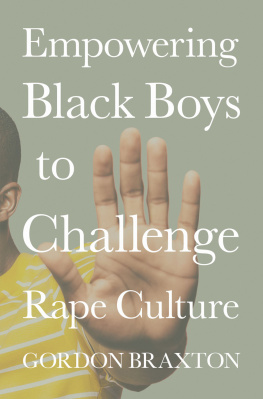
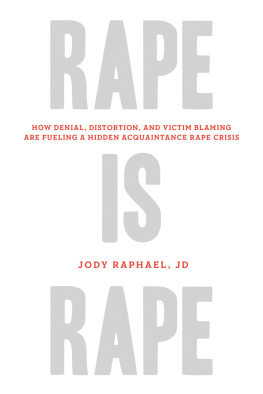
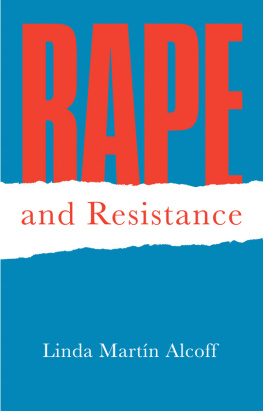
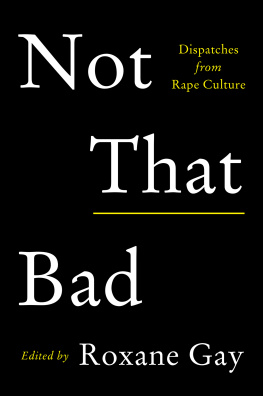
 TM The paper used in this publication meets the minimum requirements of American National Standard for Information Sciences Permanence of Paper for Printed Library Materials, ANSI/NISO Z39.48-1992.
TM The paper used in this publication meets the minimum requirements of American National Standard for Information Sciences Permanence of Paper for Printed Library Materials, ANSI/NISO Z39.48-1992.